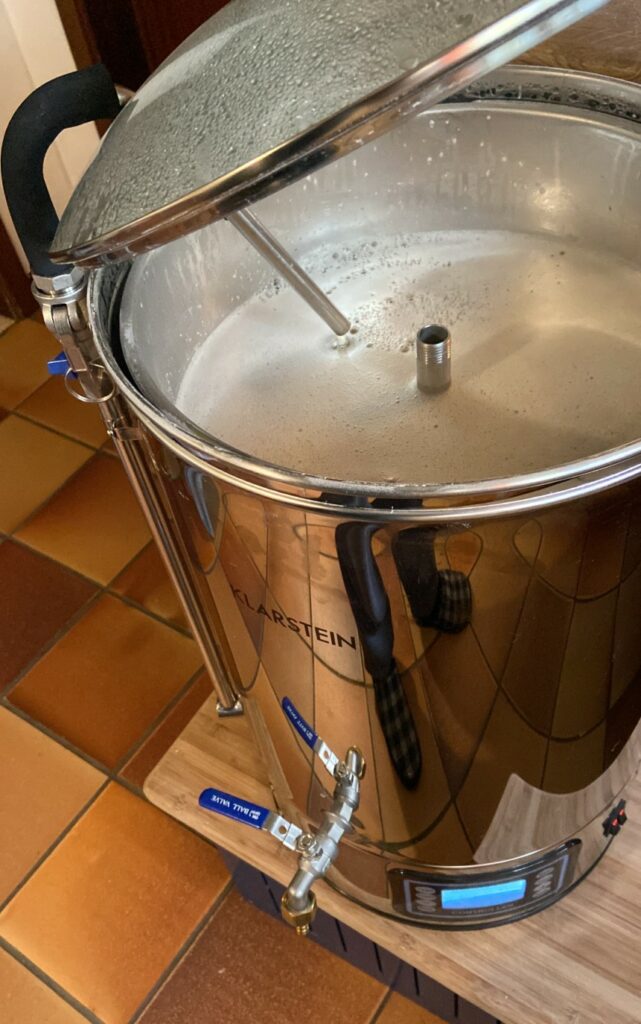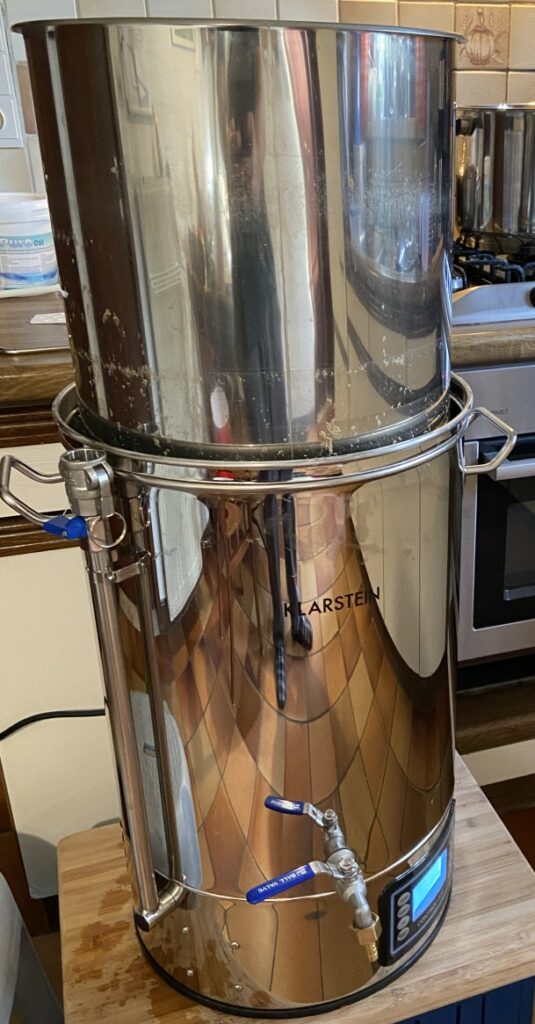My newest tripel beer is based on the previous brews. But I made a few small changes to the recipe and used 2 other yeasts. The results are 2 blond beers: T7a (8.2% alc) and T7b (6.2% alc).
Characteristics
| Type | Tripel |
| Alcohol | 8.2% |
| Color | 18 EBC |
| Bitterness | 30 IBU |
Brewing
| Mash water | 22.6 l |
| Rinse water | 9.3 l |
| Total beer | ~21 l (T7a+b) |
| Mash 63°C | 35 minutes |
| Mash 72°C | 30 minutes |
| Brewed | 11/11/2022 |
| Bottled | 9/12/2022 |
Ingredients
| 2 kg | Dingemans Pilsen MD |
| 2.1 kg | Vienna |
| 0.6 kg | Weyermann Pale Wheat |
| 0.4 kg | Goldswaen Belge (30-40 EBC) |
| 0.55 kg | Oat flakes |
| 0.3 kg | Sugar |
| 35 g | Saaz (alpha 2.5%) (hop pellets) |
| 32 g | Target (alpha 14.4%) (hop pellets) |
| 7 g | Coriander |
| 10 g | Dried sweet orange peel |
| 10 g | Mangrove Jack’s Belgian Tripel M31 (11 l) |
Calculations and preparations
My previous brew (T6a and T6b) was less successful. Probably because of the issue with the Klarstein brew kettle. So this time I did some more research and changed a few parameters.
Malt grinding
Last time I grind the malt too finely. This caused a very bad flow during mashing and so the mash overflow, resulting in a lower efficiency (less alcohol then predicted).
For this brew I grind the malt coarser: the chaff as whole as possible and the inside as a mix of fine and coarser flour.



Mash thickness
The Klarstein brew kettle has an inner basket that holds the malt during mashing. But there is 7 liters below the basket. Therefore I increased the mash thickness in my Excel sheet the calculations to 5 l/kg (was 3.5 l/kg). But since the mashing of T6 didn’t go well, I did some more research. On some brewers forum I found 4 l/kg with similar brew kettles.
A thicker mash also means I will have to use more rinse water (9 l instead of 4 l). This will help to wash out more sugars from the malt during filtering and get a better extracting efficiency.
Brewing plan
For the calculation of the brewing plan I used the Excel brewing plan.

